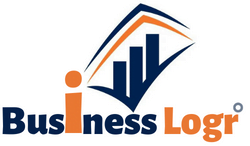
The down payment is one of the biggest financial factors to take into account when buying a property. The most common kind of financing for many homebuyers is a conventional mortgage, and it’s critical to comprehend the specifics of the down payment requirements. Everything you need to know about conventional house loan down payments will be covered in this post.
A conventional home loan: what is it?
A conventional home loan is one that isn’t backed or guaranteed by the Department of Veterans Affairs (VA) or the Federal Housing Administration (FHA). Rather, the risk of the loan is taken on by the lender. As a result, conventional house loans usually have more stringent qualifying standards, such as higher income and credit score requirements.
What Is the Down Payment for a Conventional Home Loan?
The loan-to-value (LTV) ratio is one of the most important variables in figuring out how much down payment is required for a conventional house loan. The loan amount divided by the property’s assessed value is the LTV ratio. The majority of conventional house loans have a 5% minimum down payment requirement; however, other lenders could have greater requirements based on the borrower’s debt-to-income ratio, credit score, and other variables. For instance, 20% of the home’s worth would be needed as a down payment if the LTV ratio was 80%.
Why does a down payment matter?
The down payment holds significance for multiple reasons. It first demonstrates to the lender the borrower’s commitment to the loan and willingness to put down personal funds for the house. In the event that the borrower defaults on the loan, it lowers the lender’s risk of loss. Third, a higher down payment could make it easier for the borrower to get approved for a lower interest rate and result in interest cost savings over the course of the loan.
What Benefits Can a Higher Down Payment Offer?
Even though a 5% down payment might be the only requirement, there are a number of benefits to making a larger down payment. In order to qualify for a lower interest rate, for instance, a larger down payment may help the borrower save thousands of dollars over the course of the loan. Furthermore, a higher down payment can assist the borrower in avoiding the need for private mortgage insurance (PMI), which can significantly raise the monthly payment.
What Drawbacks Could a Lower Down Payment Have?
There are a few drawbacks to take into account, even if some purchasers may find a lower down payment more enticing. Initially, a lower down payment translates into a greater loan amount, which may increase interest rates and monthly mortgage payments over the course of the loan. Second, if the borrower makes a smaller down payment, they might have to pay PMI, which can significantly raise the monthly mortgage payment. Lastly, the borrower may have fewer options when it comes to negotiating the purchase price or selecting a home if they have a lower down payment.
In summary
For purchasers of real estate, a traditional down payment is an important financial factor. Even though a 5% down payment is normally required, there are several benefits to making a larger down payment, such as reduced interest rates and the ability to bypass PMI requirements. Conversely, a lower down payment could come with drawbacks like increased monthly mortgage payments and PMI requirements. In the end, the amount of the down payment should be determined by the borrower’s priorities, aspirations, and financial status.




